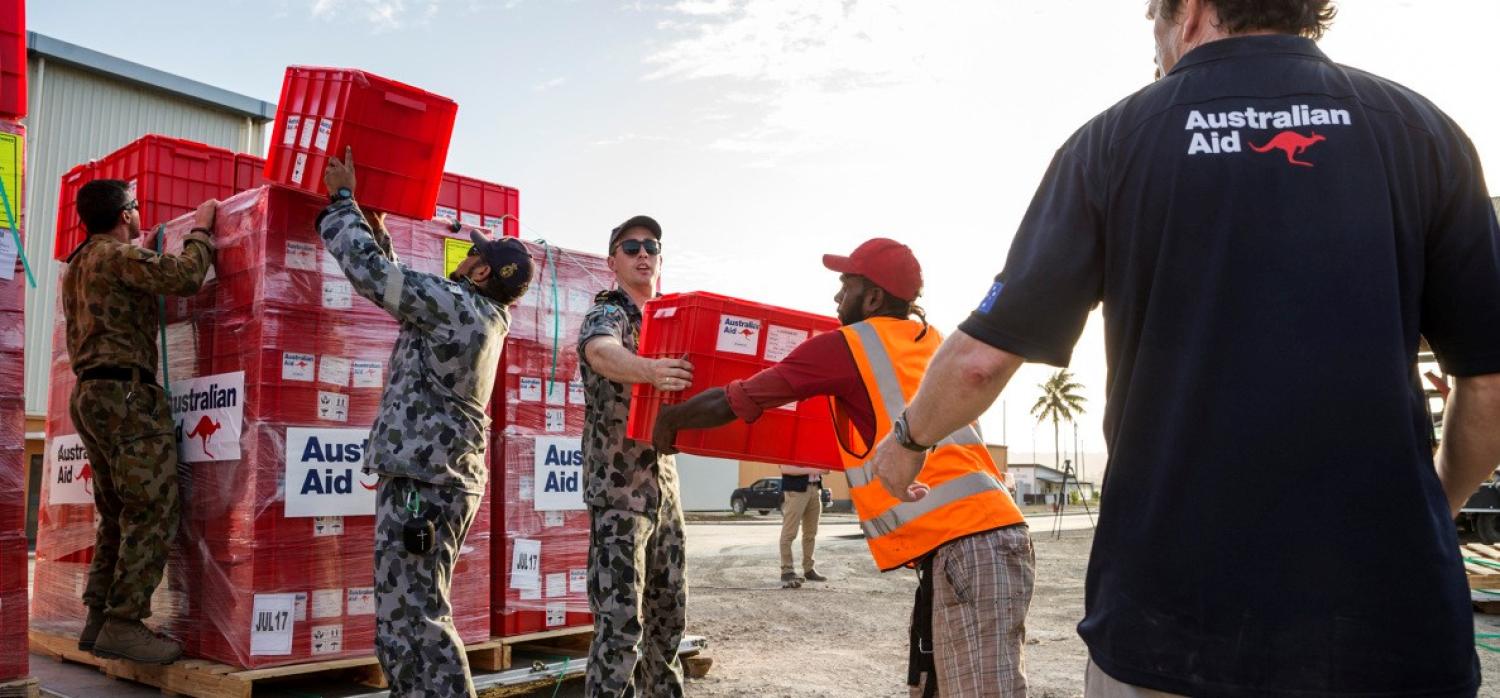Diminished and marginalised sums up the way Australia's development assistance program is treated in the Foreign Policy White Paper.
The program represents by far the biggest proportion of Department of Foreign Affairs and Trade's budget (DFAT's total budget in 2017/2018 is $5.8 billion, of which official development assistance is $3.6 billion) and its work should be recognised for the key role it plays in Australia's relations across Southeast Asia and the Pacific region. But reference to development assistance in the White Paper is largely limited to one-liners buried within the paper's thematic chapters. 'Global Cooperation', the chapter where the program might have been given its due place in the sun, presents a simplistic narrative that blurs a wide a range of issues, including domestic challenges such as the protection of the Great Barrier Reef.
Why is this so? It is revealing to see how far Australia's aid program has fallen in the hierarchy of Australian foreign policy relevance since the Howard government released the first and so far only white paper on Australia's development assistance program in 2006: Australian Aid: Promoting Growth and Stability.
Much has happened to Australia's aid program since that white paper was produced. It suffered from the unsettling administrative upheaval that came with unfulfilled promises of massive budget expansion under the Rudd government; it lost its own administrative base with the demise of AusAID under the Abbott government; it lost a critical mass of internal skills and knowledge with the absorption of the program into the DFAT; and it has had its budget massively eroded.
But most importantly, it has lost the intellectual clarity of its contribution to Australia's broader foreign policy and national interests. The transparency of its activities and achievements is now buried under broad statements of intent and a portfolio budget document that requires a solid understanding of accountancy to interpret.
The 2017 White Paper indicates a determination from the government to keep the aid program in the shadows and a reluctance to make clear the role and value of Australia's aid program, not only as an important element of the broader foreign policy agenda but as a prominent aspect of how Australia approaches its responsibilities as a developed nation. When the document does finally allot some space to the aid program in Chapter Six, it does not provide any analytical basis or framework for a program that has a budget of just under $4 billion of taxpayer money.
Yet the prevailing need for Australia's aid program to support the national interest and address our region's challenges has remained constant since 2006. An appallingly broad and arguably incorrect statement in the paper attributes the reduction in global poverty to globalisation. Having delivered that assertion as fact, there is no substantial discussion about what is happening to poverty, despite the reduction of poverty still being a core goal of the government's development assistance policy.
There is little reference to the fact that despite Asia's success in reducing poverty (largely through China's own social and economic reforms), extreme poverty is still a grim reality for almost half of the region's population. And while the paper celebrates the rise of Asia's middle classes, it is silent about the rise of inequality and the changing boundaries of poverty, with more than 70% of the world's poor now living in middle-income countries. The size and purchasing power of Asia's middle class has grown in the past two decades, but their share of overall income has fallen as that of the richest quintile has increased. The paper is also silent on the development dilemma that the drivers of inequality are the same forces supporting stronger economies: technological progress, globalisation and market-oriented reform.
Even in the chapter dedicated to working with the developing Pacific countries, the role of aid and Australia's very significant development program is treated more as a leitmotif than as a major component of the relationships. Perhaps one should take this as a positive recognition of the need for Australia to look beyond the aid program as the defining element of its relationships with these countries.
But the White Paper's overall treatment of aid and development suggests that even in this region where Australia remains the leading donor, the prevailing preference is to diminish and stifle Australia's international development story. Why is this so?

